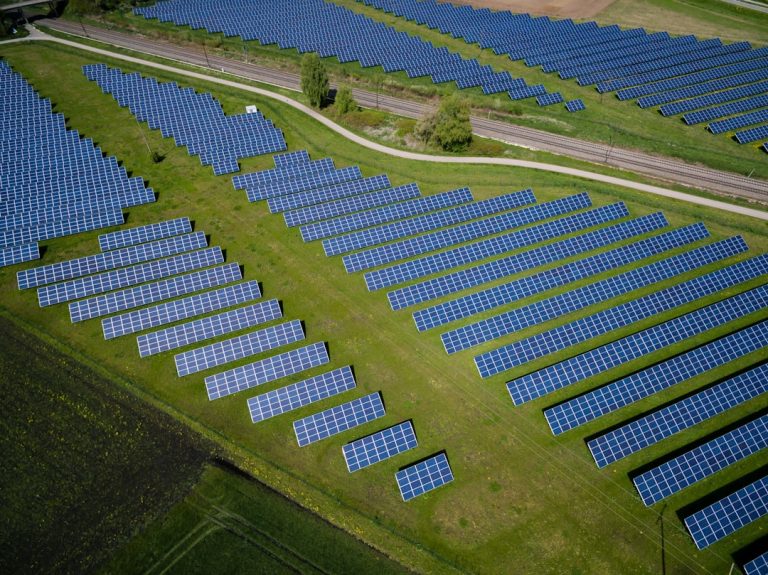
The demand for veterinary assistants and lab animal caretakers has seen a significant surge in recent years, driven by a growing awareness of animal health and welfare. As pet ownership continues to rise, particularly in urban areas, the need for skilled professionals who can provide support in veterinary clinics and animal hospitals has become increasingly critical. According to the American Veterinary Medical Association (AVMA), approximately 67% of U.S.
households own a pet, which translates to over 84 million homes. This statistic underscores the necessity for veterinary services, thereby creating a robust job market for those looking to enter the field. Moreover, the expansion of biomedical research and the increasing use of laboratory animals in scientific studies have further fueled the demand for lab animal caretakers.
Institutions engaged in research require dedicated personnel to ensure the well-being of animals used in experiments, which is essential for ethical compliance and the integrity of research outcomes. The National Institutes of Health (NIH) has reported a steady increase in funding for animal research, indicating that the need for qualified caretakers will continue to grow. This dual demand for veterinary assistants and lab animal caretakers reflects a broader societal shift towards valuing animal health, welfare, and ethical treatment.
Key Takeaways
- The demand for veterinary assistants and lab animal caretakers is increasing due to the growing pet population and the expansion of research facilities.
- Education and training requirements for veterinary assistants and lab animal caretakers typically include a high school diploma or equivalent, as well as on-the-job training or a formal education program.
- Job responsibilities and duties of veterinary assistants and lab animal caretakers may include feeding and watering animals, cleaning and disinfecting cages, and assisting with medical procedures under the supervision of a veterinarian or researcher.
- Career opportunities and advancement in the field of veterinary assistance and lab animal caretaking may include specialization in areas such as exotic animal care or research animal management, as well as opportunities for advancement to supervisory or management roles.
- Compassion and empathy are essential qualities for veterinary assistants and lab animal caretakers, as they play a crucial role in promoting animal welfare and health, and in providing comfort and care to sick or injured animals.
Education and Training Requirements for Veterinary Assistants and Lab Animal Caretakers
To embark on a career as a veterinary assistant or lab animal caretaker, individuals typically need to meet specific educational and training requirements. Most positions require at least a high school diploma or equivalent, but many employers prefer candidates who have completed post-secondary education in veterinary technology or animal science. Associate degree programs in veterinary technology are particularly popular, as they provide comprehensive training in animal care, medical terminology, and basic veterinary procedures.
These programs often include hands-on clinical experience, which is invaluable for developing practical skills. In addition to formal education, aspiring veterinary assistants and lab animal caretakers may benefit from obtaining certifications. Organizations such as the National Association of Veterinary Technicians in America (NAVTA) offer certification programs that can enhance job prospects and demonstrate a commitment to the profession.
For lab animal caretakers, certifications from the American Association for Laboratory Animal Science (AALAS) are highly regarded. These certifications not only validate an individual’s knowledge and skills but also indicate adherence to industry standards and best practices in animal care.
Job Responsibilities and Duties of Veterinary Assistants and Lab Animal Caretakers

Veterinary assistants play a crucial role in supporting veterinarians and ensuring the smooth operation of veterinary clinics. Their responsibilities encompass a wide range of tasks, including preparing animals for examinations, assisting during surgical procedures, and maintaining medical records. They are often the first point of contact for pet owners, requiring strong communication skills to address client inquiries and provide information about pet care.
Additionally, veterinary assistants are responsible for cleaning and sterilizing equipment, ensuring that the clinic adheres to health and safety regulations. Lab animal caretakers, on the other hand, focus primarily on the care of animals used in research settings. Their duties include feeding, cleaning, and monitoring the health of laboratory animals, as well as maintaining accurate records of their care.
They must be knowledgeable about various species used in research, including rodents, rabbits, and non-human primates, as each species has unique care requirements. Furthermore, lab animal caretakers often collaborate with researchers to ensure that animals are treated humanely and that their living conditions meet regulatory standards. This role requires a keen attention to detail and a strong understanding of ethical considerations surrounding animal research.
Career Opportunities and Advancement in the Field of Veterinary Assistance and Lab Animal Caretaking
| Metrics | Statistics |
|---|---|
| Employment Growth | 16% growth from 2019 to 2029 (faster than average) |
| Median Pay | 28,590 per year |
| Job Outlook | Positive job outlook due to increasing pet ownership and demand for veterinary services |
| Advancement Opportunities | Potential to advance to veterinary technologist or other specialized roles |
| Education Requirements | Most positions require a high school diploma or equivalent |
The field of veterinary assistance and lab animal caretaking offers a variety of career opportunities for individuals seeking to advance their professional journey. Entry-level positions typically include roles such as veterinary assistant or lab animal caretaker; however, with experience and additional education, individuals can progress to more specialized roles. For instance, veterinary technicians who complete further training may become licensed veterinary technicians (LVTs), allowing them to perform more advanced medical procedures under a veterinarian’s supervision.
In laboratory settings, experienced lab animal caretakers may advance to positions such as laboratory animal technologist or supervisor. These roles often involve overseeing teams of caretakers, managing animal care protocols, and ensuring compliance with federal regulations regarding animal research. Additionally, individuals may choose to specialize in areas such as anesthesia or surgical assistance within veterinary practices or pursue careers in veterinary practice management or education.
The Importance of Compassion and Empathy in Veterinary Assistance and Lab Animal Caretaking
Compassion and empathy are fundamental qualities that underpin successful careers in veterinary assistance and lab animal caretaking. Working with animals requires not only technical skills but also an innate understanding of their needs and emotions. Veterinary assistants often encounter distressed pets and anxious owners; thus, their ability to provide comfort and reassurance is essential in fostering a positive experience for both parties.
This emotional intelligence helps build trust between clients and veterinary staff, ultimately enhancing the quality of care provided.
The ethical implications of using animals in research necessitate a deep commitment to their welfare.
Caretakers must advocate for the animals’ needs while balancing the demands of scientific inquiry. This dual responsibility requires a strong moral compass and an unwavering dedication to promoting humane practices within research environments.
Challenges and Rewards of Working as a Veterinary Assistant or Lab Animal Caretaker

Working as a veterinary assistant or lab animal caretaker presents both challenges and rewards that shape the professional experience. One significant challenge is the emotional toll associated with caring for sick or injured animals. Veterinary assistants often witness heartbreaking situations where pets are diagnosed with terminal illnesses or must be euthanized due to severe health issues.
This aspect of the job can lead to compassion fatigue if not managed properly. Support systems within veterinary practices, such as counseling services or peer support groups, can help mitigate these emotional challenges. On the other hand, the rewards of working in this field are profound.
Many professionals find immense satisfaction in contributing to the health and well-being of animals. The joy of seeing a once-ailing pet recover under their care can be incredibly fulfilling. Additionally, building lasting relationships with clients who trust them with their pets’ health fosters a sense of community within veterinary practices.
For lab animal caretakers, knowing that their work contributes to advancements in medical research can be equally rewarding; they play a vital role in ensuring that scientific discoveries are made ethically and responsibly.
The Role of Veterinary Assistants and Lab Animal Caretakers in Promoting Animal Welfare and Health
Veterinary assistants and lab animal caretakers serve as crucial advocates for animal welfare within their respective fields. In veterinary clinics, assistants educate pet owners about proper care practices, preventive health measures, and the importance of regular check-ups. By providing information on nutrition, exercise, and behavioral issues, they empower pet owners to make informed decisions that enhance their pets’ quality of life.
This proactive approach not only improves individual animal health but also contributes to broader public awareness regarding responsible pet ownership. In laboratory settings, lab animal caretakers uphold high standards of care that align with ethical guidelines governing animal research. They ensure that animals are housed in environments that meet their physical and psychological needs while advocating for humane treatment throughout the research process.
By monitoring animal health closely and reporting any concerns to researchers or veterinarians, they play an essential role in maintaining compliance with regulations set forth by organizations such as the Institutional Animal Care and Use Committee (IACUC). Their commitment to promoting welfare within research environments is vital for advancing scientific knowledge while respecting the lives involved.
Future Trends and Developments in the Field of Veterinary Assistance and Lab Animal Caretaking
As society continues to evolve, so too does the field of veterinary assistance and lab animal caretaking. One notable trend is the increasing integration of technology into veterinary practices. Telemedicine has gained traction in recent years, allowing veterinary assistants to conduct virtual consultations with pet owners.
This shift not only enhances accessibility but also streamlines communication between clients and veterinary staff. Additionally, advancements in diagnostic tools such as digital imaging and laboratory testing are transforming how veterinary assistants support veterinarians during examinations. In laboratory settings, there is a growing emphasis on alternative methods to reduce reliance on live animals in research.
The development of advanced technologies such as organ-on-a-chip models and computer simulations holds promise for minimizing animal use while still yielding valuable scientific insights. As these innovations gain acceptance within the research community, lab animal caretakers will need to adapt their skills accordingly while continuing to advocate for humane treatment practices. The future landscape for veterinary assistants and lab animal caretakers is poised for growth driven by technological advancements, increased public awareness of animal welfare issues, and ongoing developments in research methodologies.
As these professionals navigate this dynamic environment, their roles will remain integral to ensuring the health and well-being of animals across various settings.
According to a recent article on careersintheusa.com, Veterinary Assistants and Laboratory Animal Caretakers are among the fastest growing occupations in the USA. This is great news for those interested in pursuing a career in animal care, as job opportunities in this field are expected to continue to increase in the coming years. If you are considering a career as a Veterinary Assistant or Laboratory Animal Caretaker, be sure to check out the resources available on careersintheusa.com to learn more about the job outlook and requirements for these positions.
FAQs
What are the duties of veterinary assistants and laboratory animal caretakers?
Veterinary assistants and laboratory animal caretakers are responsible for feeding, bathing, and exercising animals, as well as cleaning and disinfecting their cages. They also assist with basic animal care procedures and may help veterinarians or scientists with research or experiments.
What is the job outlook for veterinary assistants and laboratory animal caretakers?
According to the U.S. Bureau of Labor Statistics, the employment of veterinary assistants and laboratory animal caretakers is projected to grow 23% from 2018 to 2028, much faster than the average for all occupations. This growth is driven by the increasing demand for pet care and research in the medical and pharmaceutical fields.
What are the educational requirements for becoming a veterinary assistant or laboratory animal caretaker?
Most veterinary assistants and laboratory animal caretakers have a high school diploma or equivalent and receive on-the-job training. Some employers may prefer candidates with formal training in animal care or related fields, such as a certificate or associate’s degree from a community college or vocational school.
What is the average salary for veterinary assistants and laboratory animal caretakers?
According to the U.S. Bureau of Labor Statistics, the median annual wage for veterinary assistants and laboratory animal caretakers was $28,590 in May 2018. The lowest 10% earned less than $20,880, and the highest 10% earned more than $39,680. Keep in mind that salaries can vary depending on factors such as location, experience, and employer.






